All products featured are independently chosen by us. However, SoundGuys may receive a commission on orders placed through its retail links. See our ethics statement.
Nothing Ear (a) vs Nothing Ear
Published onMay 21, 2024



Nothing has released two new earbuds to its esteemed Ear lineup. A new flagship in the Nothing Ear, and a more affordable option in the Nothing Ear (a). Is it worth it to spend more money for the Nothing Ear, or should you save your money with the Nothing Ear (a)? That’s what we set out to find out in this Nothing Ear vs Nothing Ear (a) comparison.
Editor’s note: this article was published on May 21, 2024, and is the first version of the article. Updates will follow as the market changes.
What’s it like to use the Nothing Ear compared to the Nothing Ear (a)?
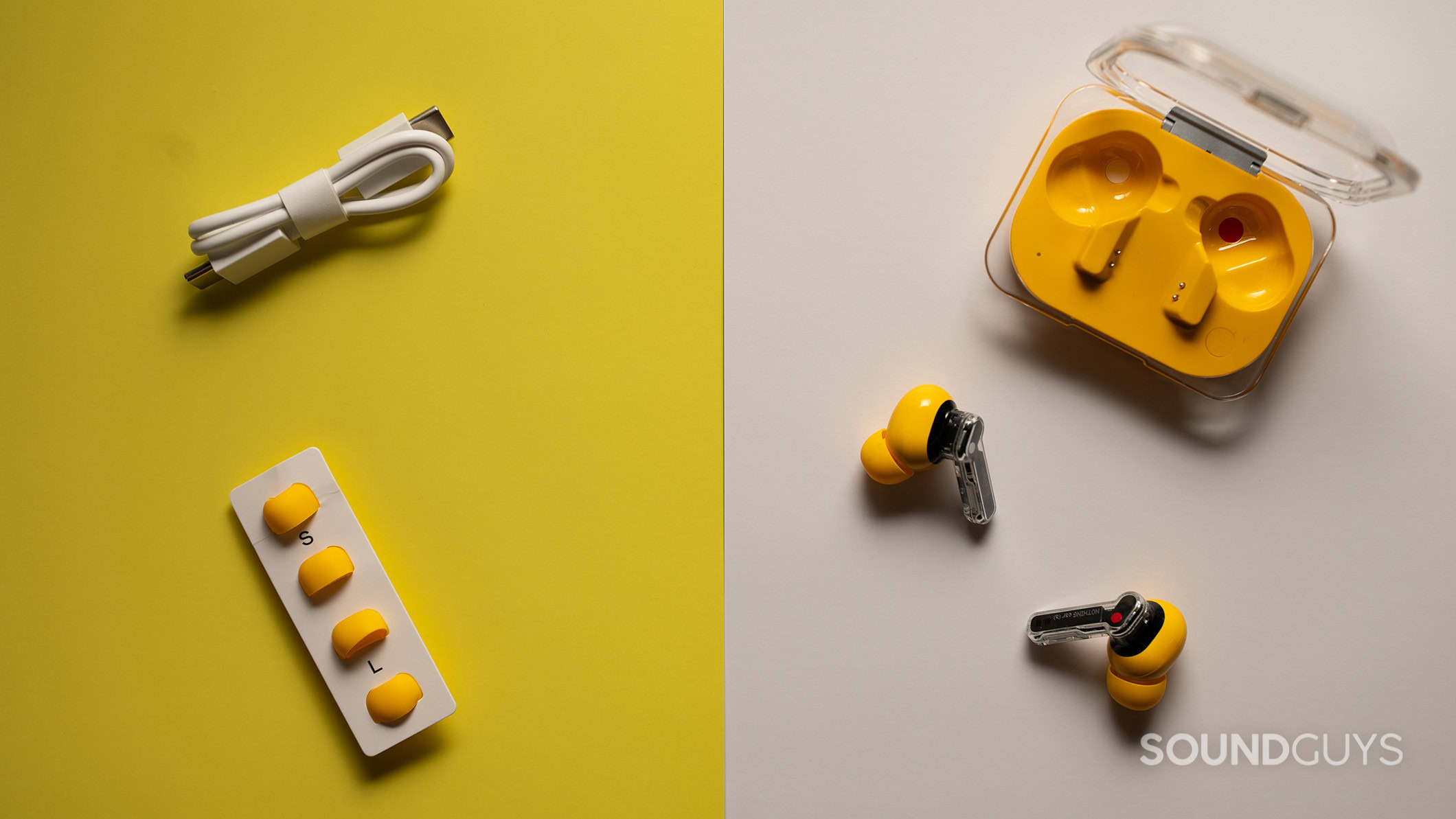
The Nothing Ear and Ear (a) share a nearly identical earbud design. The Ear (a) are slightly heavier at 4.8g compared to the 4.6g of the Ear, but both are extremely lightweight and comfortable. If you are looking for an eye-catching design, only the Ear (a) come in a bright Yellow color option, in addition to the standard White and Black options. Both sets of earbuds are IP54 water and dust-resistant.
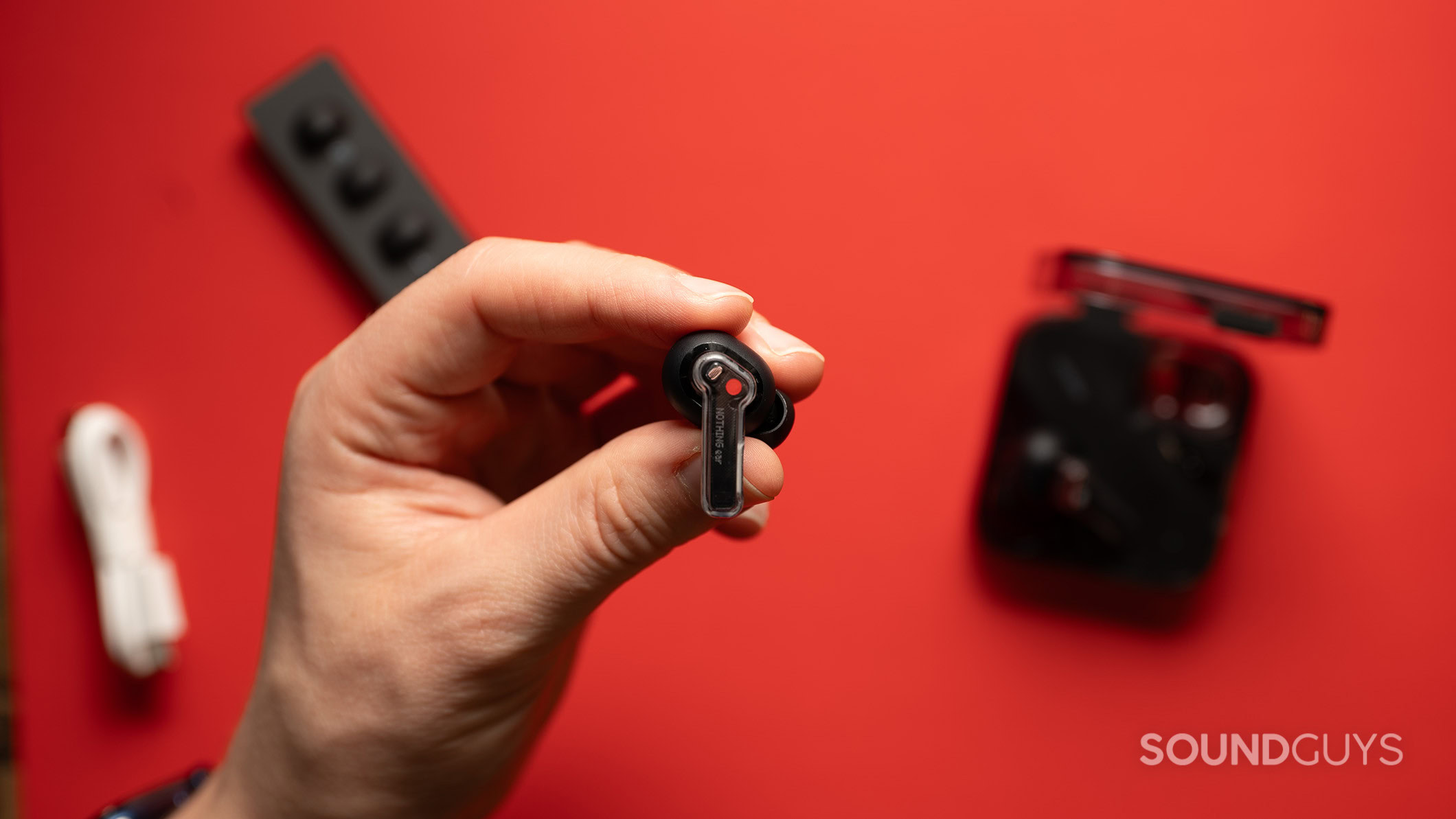
Where the design differs is in the charging case. The Ear have a square case, while the Ear (a) have a smaller bubble-shaped case. If you plan on taking your earbuds to the beach, you will prefer the charging case of the Ear as it is IP55 water and dust-resistant, whereas the charging case of the Ear (a) is only IPX2 rated.
How do you control the Nothing Ear and Nothing Ear (a)?
The Nothing Ear (a) and Nothing Ear share an identical control scheme. Both use squeeze controls on the earbud stems. It’s an intuitive control system that doesn’t compromise the fit and seal of the earbuds when you use them, and you can fully customize the controls from within the Nothing X app.
| Left earbud | Right earbud | |
|---|---|---|
Single pinch | Left earbud Play/pause, answer/end call | Right earbud Play/pause, answer/end call |
Double pinch | Left earbud Skip forward, decline call | Right earbud Skip forward, decline call |
Triple pinch | Left earbud Skip back | Right earbud Skip back |
Pinch and hold | Left earbud Noise control | Right earbud Noise control |
Should you use the Nothing X app for the Nothing Ear and Nothing Ear (a)?
One of the main differences between the Nothing Ear (a) and the Nothing Ear is in the app experience. You get significantly more options to customize the sound with the Nothing Ear than you do with the Nothing Ear (a). Only the Nothing Ear provides access to the advanced equalizer, which allows you to shape the sound to your exact liking. The Nothing Ear also provides access to the Personalized Sound Profile feature, which conducts a hearing test to amplify frequencies you may struggle to hear otherwise. On the other hand, the Nothing Ear (a) only provides access to a simple equalizer with a few presets, and a Bass Enhance mode to dynamically amplify low frequencies.
Beyond the sound customization differences, both earbuds provide a similar app experience with all of the features you would expect from a companion app including noise control settings, battery information, find my earbuds, and more.
How do the Nothing Ear and Nothing Ear (a) connect?
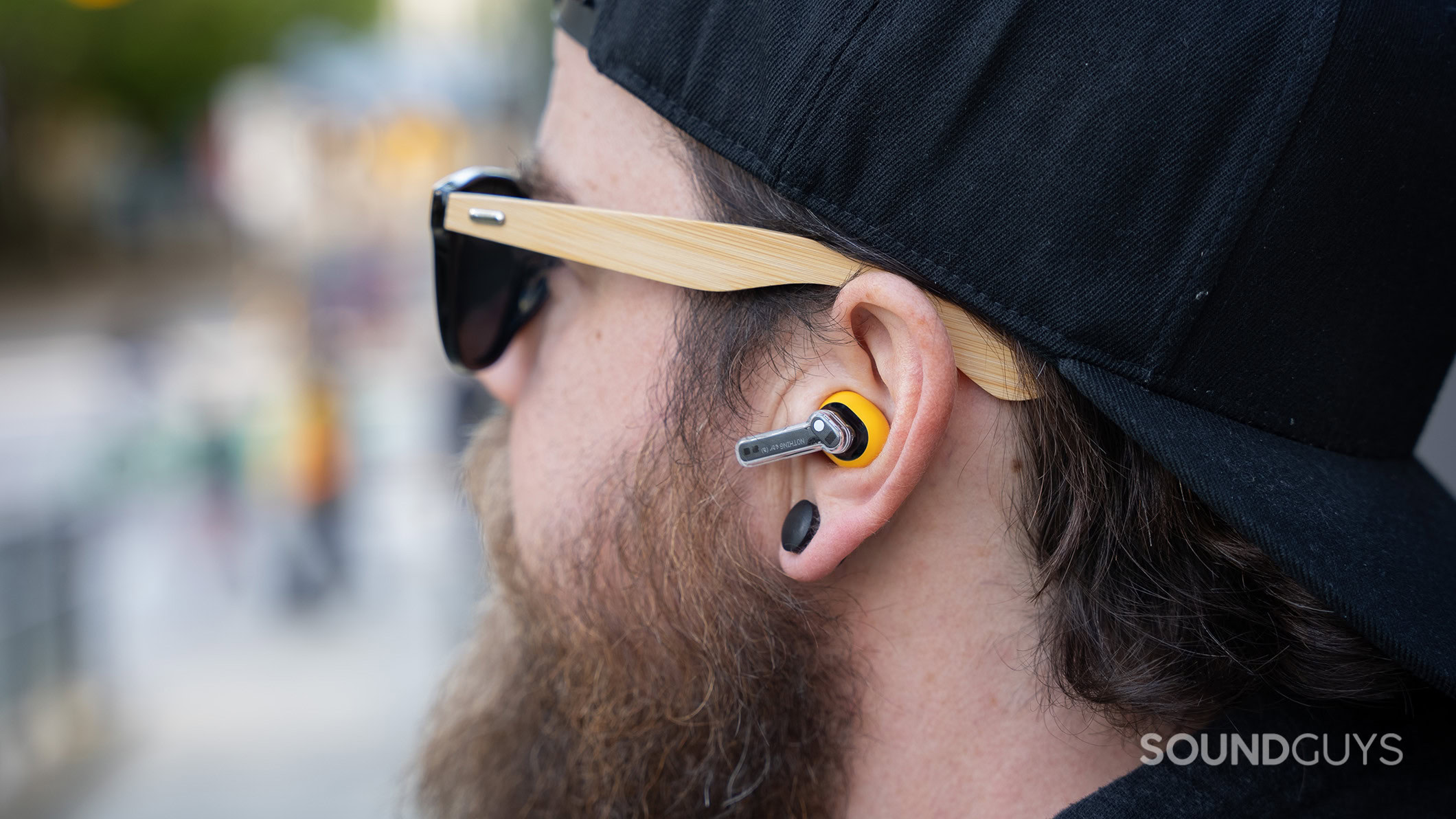
Both the Nothing Ear and Nothing Ear (a) use Bluetooth 5.3 to connect to devices. A wide variety of Bluetooth codecs are supported on both devices including SBC, AAC, and LDAC, with the Nothing Ear also offering LHDC support. We experienced some minor connection stutters while using both sets of earbuds over an AAC connection with an iPhone and walking around busy downtown streets. In every other situation, we didn’t experience connection issues with either earbud.
For connecting to multiple devices at the same time, both sets of earbuds support Bluetooth multipoint. As well, both sets of earbuds support a low-latency connection for watching videos and gaming.
Is battery life better on the Nothing Ear or Nothing Ear (a)?
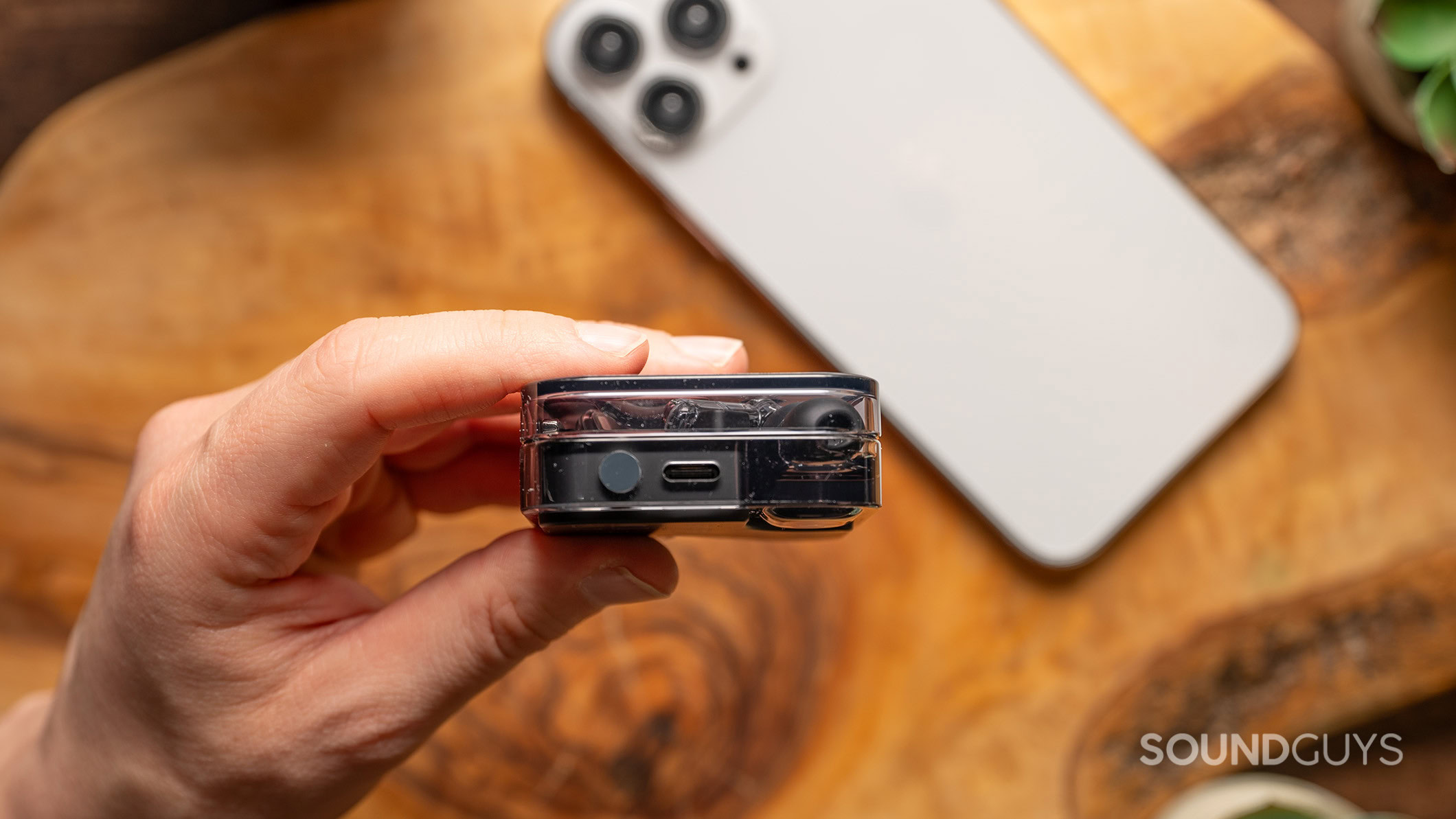
Our battery testing shows similar battery life for the Nothing Ear and Ear (a). The Nothing Ear lasted 8 hours and 4 minutes of playback on a single charge, whereas the Nothing Ear (a) lasted 8 hours and 49 minutes of playback on a single charge. Each respective charging case provides a few extra charges, and you can get up to 40 hours of total playback with the Nothing Ear and up to 42.5 hours of total playback with the Nothing Ear (a). Both charging cases support fast charging over USB-C, but only the Nothing Ear supports wireless charging.
Do the Nothing Ear (a) or Nothing Ear block noise better?
Loading chart ...
The Nothing Ear and Nothing Ear (a) both use a Smart ANC algorithm that checks the seal between the ear and ear canal, and then adjusts the ANC accordingly. Therefore, your experience with the noise canceling will vary depending on your fit. That said, we observed better noise canceling with the Nothing Ear compared to the Nothing Ear (a). The chart above shows the isolation and ANC of the Nothing Ear (a), whereas the one below shows the isolation and ANC of the Nothing Ear.
Loading chart ...
On average, the Nothing Ear (a) reduce the loudness of environmental noise by 57%, whereas the Nothing Ear reduce the loudness of environmental noise by 71%. In real-life, I noticed very minimal differences between the two earbuds when it comes to blocking out noise.
Both earbuds also have a transparency mode to amplify your surroundings. I didn’t notice any difference between the transparency modes of the two earbuds, with both doing an adequate job of amplifying voices and traffic.
Do the Nothing Ear sound better than the Nothing Ear (a)?
The Nothing Ear have better sound quality than the Nothing Ear (a). The Nothing Ear have some of the best sound quality of any wireless earbuds, whereas the Nothing Ear (a) have average sound quality.
Multi-Dimensional Audio Quality Scores (MDAQS)
The chart below shows how the Nothing Ear and Nothing Ear (a) sound quality was assessed by the Multi-Dimensional Audio Quality Score (MDAQS) algorithm from HEAD acoustics.
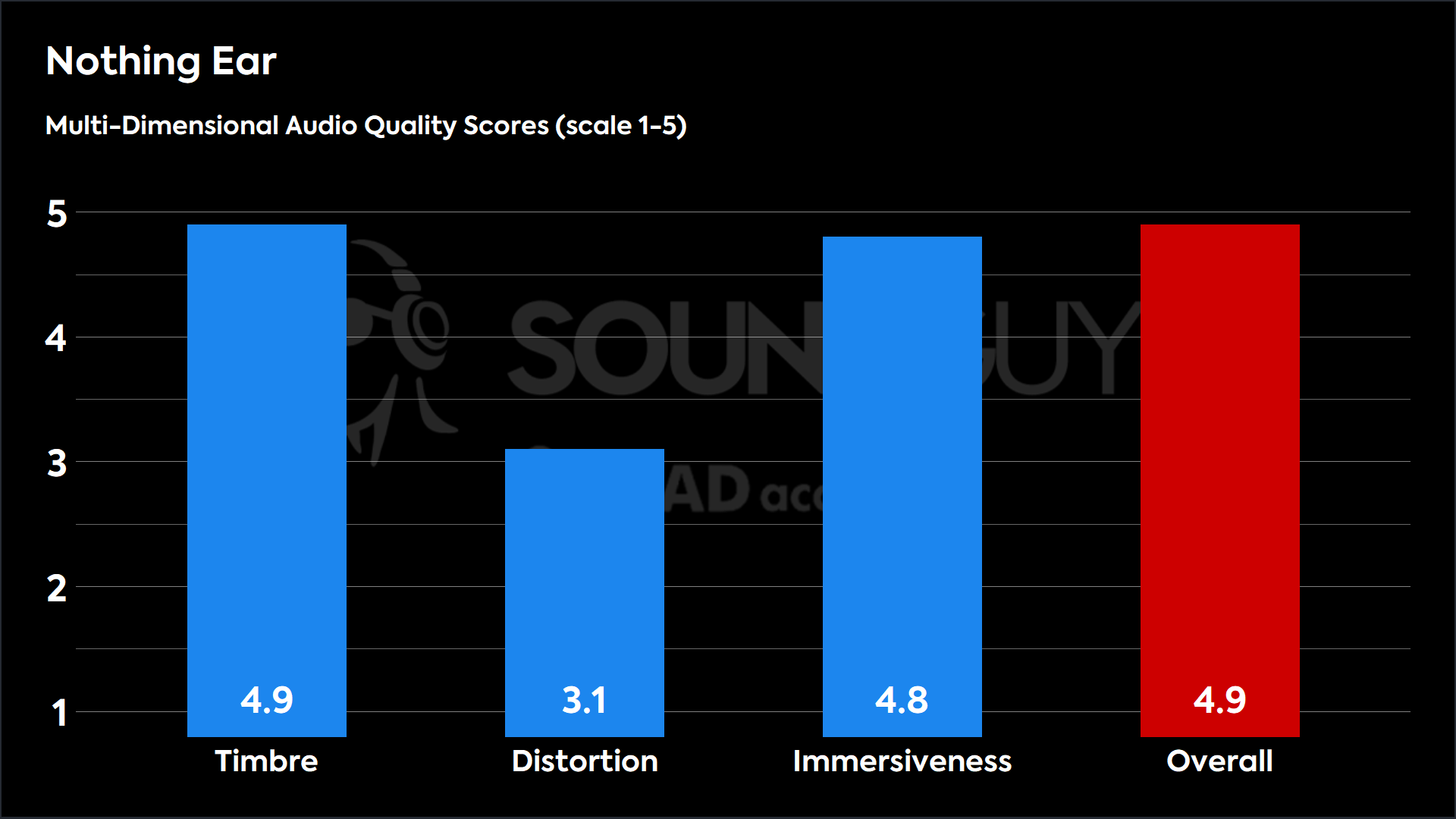
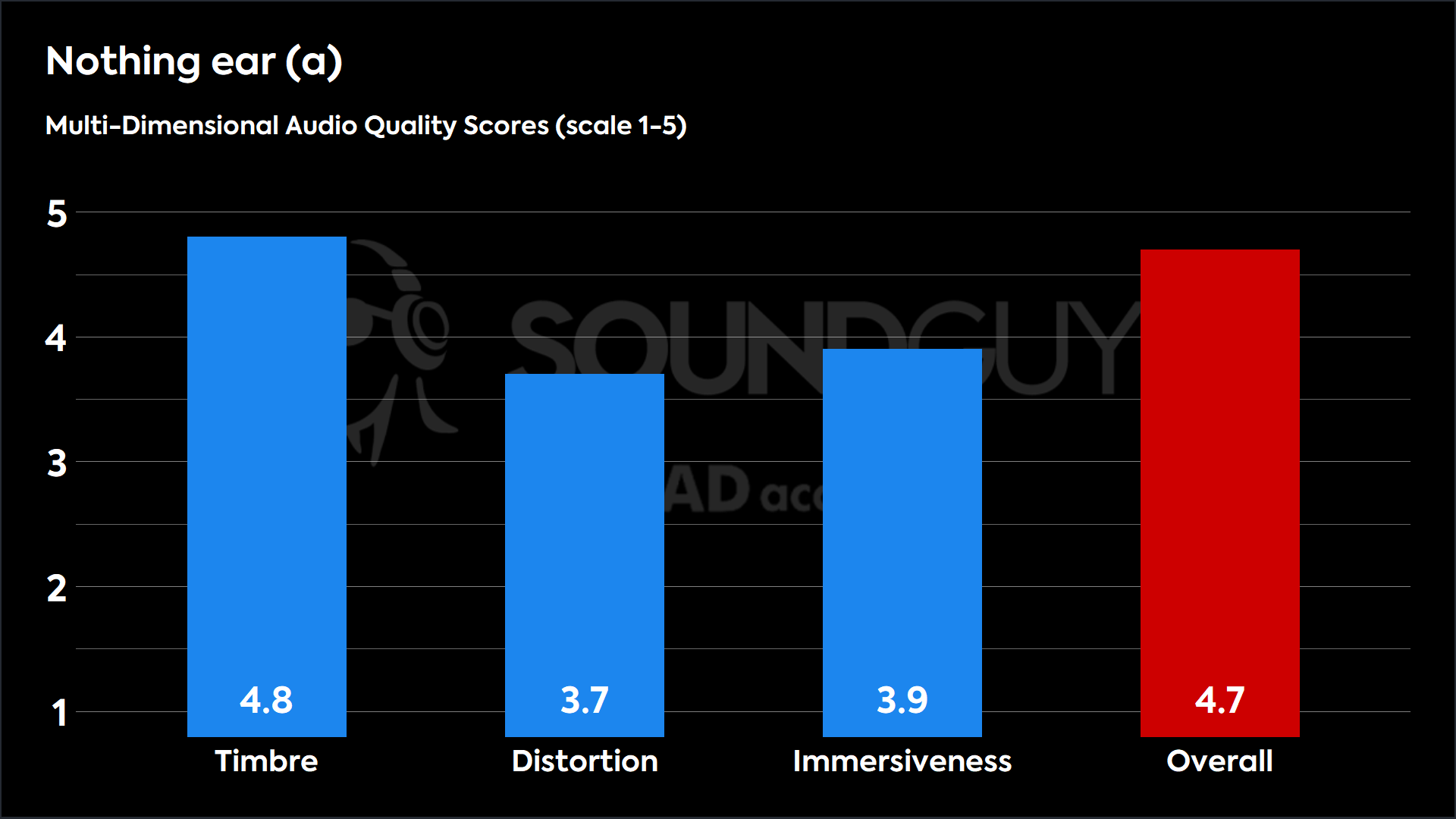
The tuning of the earbuds is similar with a closely matched score in Timbre. On the other hand, the ceramic diaphragm drivers of the Nothing Ear excel when it comes to Immersiveness.
Timbre (MOS-T) represents how faithfully the headphones reproduce the frequency spectrum and temporal resolution (timing information).
Distortion (MOS-D) represents non-linearities and added noise: higher scores mean cleaner reproduction.
Immersiveness (MOS-I) represents perceived source width and positioning: how well virtual sound sources are defined in three-dimensional space.
See here for an explanation of MDAQS, how it works, and how it was developed.
Reviewer’s notes
Out of the box, both sets of earbuds have a very prominent amount of bass. That said, it’s not more than most people like, and you can easily adjust it using the app equalizer. Most people will enjoy the way that either set of earbuds sounds right out of the box, but audiophiles will enjoy the extra control available with the advanced equalizer for the Nothing Ear. The Nothing Ear have ceramic diaphragm drivers that deliver better clarity and detail compared to the standard drivers in the Nothing Ear (a). This means that it is easier to pick out the sounds of individual instruments and vocal layers when listening on the Nothing Ear compared to the Nothing Ear (a).
Objective Measurements
Loading chart ...
The chart above compares the default frequency response of the Nothing Ear and Nothing Ear (a) to our headphone preference curve. Out of the box, the Nothing Ear amplifies bass and high frequencies more than the Nothing Ear (a). The Nothing Ear (a) has a significant drop-off above 8kHz.
Do the Nothing Ear or Nothing Ear (a) have a better microphone?
The Nothing Ear and Nothing Ear (a) have identical microphone quality. Both excel at blocking out background noise, so people should understand what you are saying in most environments with either set of earbuds.
Nothing Ear microphone demo (Ideal conditions):
Nothing Ear (a) microphone demo (Ideal conditions):
Nothing Ear microphone demo (Street conditions):
Nothing Ear (a) microphone demo (Street conditions):
Which microphone sounds beter to you?
Nothing Ear vs Nothing Ear (a): Price and availability
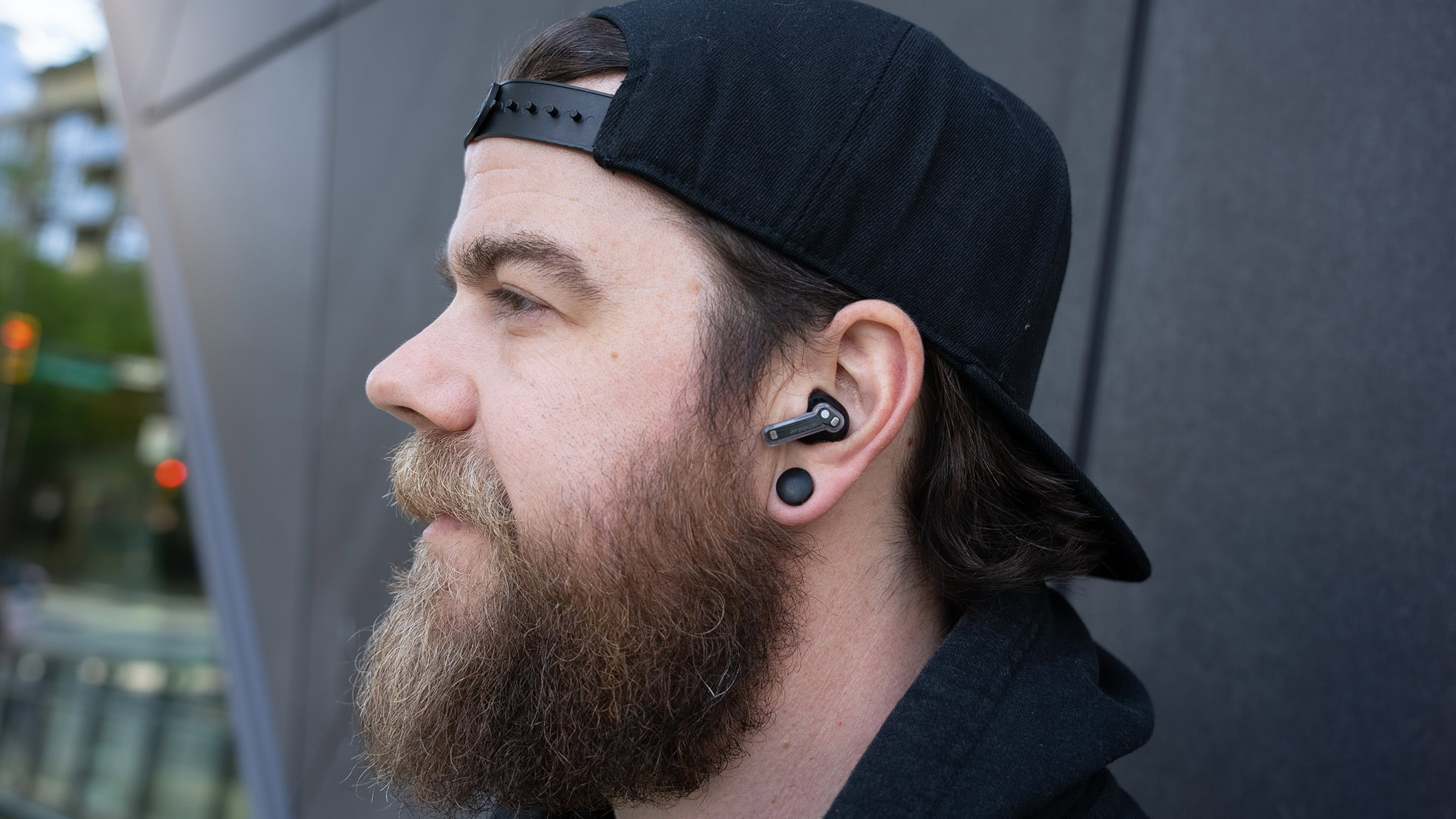
The Nothing Ear and Nothing Ear (a) were both released in April, 2024, so availability should be similar between the two. With a starting price of $149 USD, the Nothing Ear is $50 more expensive than the Nothing Ear (a).
Should you get the Nothing Ear or Nothing Ear (a)?
If you want the absolute best sound quality, the Nothing Ear are worth the extra cost. The ceramic diaphragm drivers sound better out of the box, and you get more customization options with the advanced equalizer and personalized sound profile.
If you aren’t an audiophile, you won’t regret going with the Nothing Ear (a). For their price, the Nothing Ear (a) are still a great value buy.

ANC
LDAC
Frequently asked questions
At an original price of $149, the Nothing Ear (2) are the predecessor to the Nothing Ear. With these earbuds, the sound has a lot of treble out of the box, but you can tweak it with the advanced equalizer. If you can find the Nothing Ear (a) on sale, they are still a good option.
The Nothing Ear (a) are a much better option than the Nothing Ear (stick). Without swappable ear tips, it is very challenging to get a good fit and proper isolation with the Nothing Ear (stick).